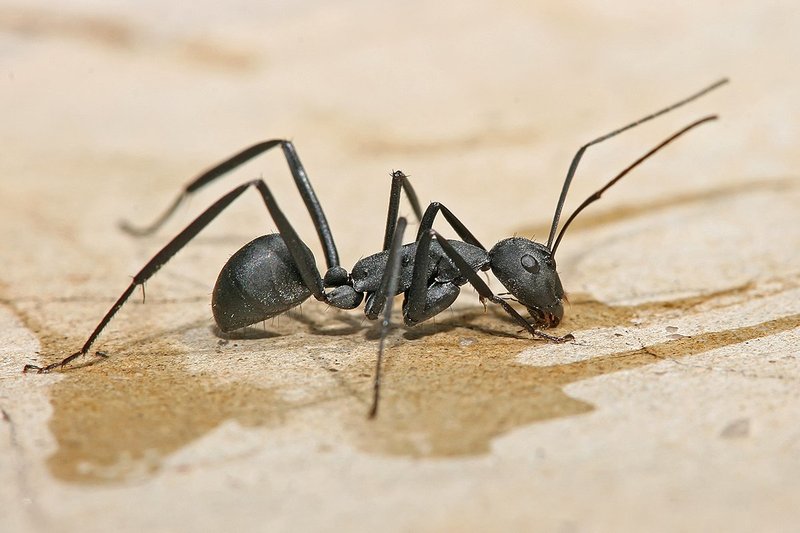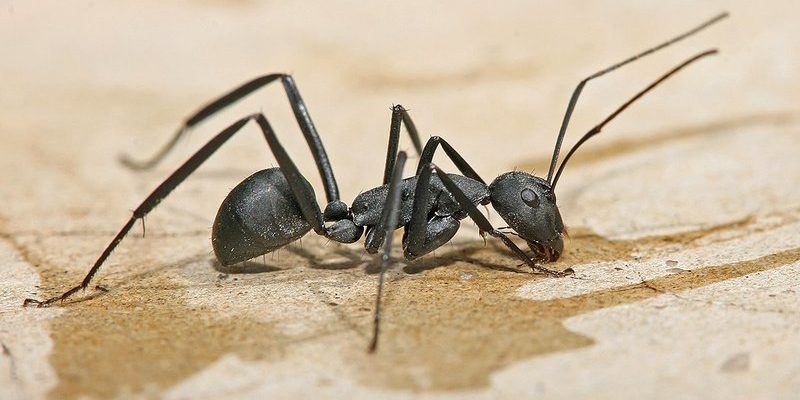
Carpenter ants are often mistaken for other types of ants, but their unique behavior and preferences set them apart. Imagine a construction crew that not only builds but also dismantles with precision. That’s what carpenter ants do; they chew through wood to create their homes. In this article, we’ll explore ten fascinating facts about these remarkable little builders that will give you a new appreciation for them—and maybe even spark your interest in entomology!
1. They’re Not So Small After All
Carpenter ants may be called “ants,” but they can be quite hefty! They typically measure between 1⁄4 to 1⁄2 an inch in length, with some species being even larger. Their size can surprise you. For comparison, that’s about the same length as a small paperclip!
The head of a carpenter ant is usually shiny and dark, while its body can vary in color from black to red or a mix of both. The physical characteristics of carpenter ants help them thrive in various environments. You might be wondering how they can chew through wood so effectively. It turns out that their strong mandibles are perfectly designed for their job, making them excellent woodworkers.
2. Habitat: Where They Call Home
Carpenter ants are versatile when it comes to their habitats. They prefer damp, decaying wood, which is like a buffet for them. You can often spot them in trees, old stumps, or wooden structures in your home. Here’s the thing—while they don’t eat wood like termites do, they certainly love to make it their home.
They bore tunnels into the wood, creating a network of passages where they live, lay eggs, and store food. This can lead to significant damage if they invade your house. So, if you hear faint crunching noises in your walls, it might be worth a check! Just like any good homeowner would keep an eye on potential leaks, it’s good to keep an eye on wood around your property, too.
3. Social Structure: The Ant Colony
A carpenter ant colony is a bustling community that can range from a few hundred to several thousand members—essentially a small city! Each colony has a queen, workers, and sometimes drones. The queen’s role is to lay eggs and ensure the colony thrives, while the workers take care of building the nest, foraging for food, and caring for the young.
This social structure is quite similar to human communities. Just as everyone has a role to play, each ant has its specific job, contributing to the colony’s success. A well-functioning colony can survive for years, with some colonies living over a decade. It makes you appreciate how teamwork can lead to long-lasting success, doesn’t it?
4. They’re Masters of Communication
Carpenter ants are not only hardworking but also clever communicators. They use a mix of pheromones—chemical signals—and touch to relay messages. It’s kind of like sending a text to alert your friends about dinner plans, but way more complex!
For example, if a worker ant finds a food source, it will leave a pheromone trail back to the nest. This trail guides other ants to the feast. You might be wondering how this affects their survival. Well, efficient communication ensures that everyone in the colony knows where to find resources, making the colony stronger and more resilient overall.
5. Diet: What Do They Eat?
So, what do these wood-loving ants eat if they don’t munch on wood? Carpenter ants are omnivores, which means they eat a variety of foods. Their diet mainly consists of sugary substances, proteins, and fats. They love honeydew, a sweet sticky substance produced by aphids, and they also scavenge for dead insects.
In urban areas, they might raid your leftovers or sugary drinks, turning your picnic into a buffet. It’s a good reminder to keep food sealed up tight when you’re outside! This diverse diet helps them thrive in different environments, allowing them to adapt as needed, which is a skill we could all use!
6. They Can Be Beneficial
Believe it or not, carpenter ants can be beneficial to the ecosystem. By breaking down dead and decaying wood, they help recycle nutrients back into the soil. This process supports new plant growth and contributes to overall forest health. It’s a prime example of nature’s balance—every creature plays its part.
Moreover, carpenter ants can help keep pest populations in check. By preying on other insects like aphids, they assist in maintaining the local ecosystem. So, while they might seem like a nuisance when found in your home, they do contribute positively to nature’s cycle outside.
7. Behavior: Nomadic Influences
Carpenter ants have a fascinating behavior called “budding.” This is when a portion of the colony leaves the nest to start a new one. It’s akin to when people move to a different city for a fresh start. This process typically happens in the spring and summer when conditions are just right.
During budding, the mother queen may remain behind while worker ants set off to establish a new home. This flexibility allows their species to thrive even in changing environments. It’s a survival skill that reminds us of the importance of adaptability in our own lives.
8. They Can Live for a Long Time
The lifespan of a carpenter ant can be surprisingly lengthy. Worker ants generally live for several months, but the queen can live up to 15 years! That’s longer than some pets! This longevity is essential for the colony’s survival, as the queen’s continuous reproduction ensures that there are always new workers to maintain the nest.
It’s fascinating to think about the generational impact one queen can have on a colony. Each generation builds upon the last, helping the colony adapt and thrive over time. This idea of legacy is something that resonates deeply, don’t you think?
9. They’re Not Always Pests
Although carpenter ants are often labeled as pests, they aren’t always a threat to your home. In fact, if they’re nesting in healthy trees or dead wood, they can be left alone. However, if they invade your home, it’s essential to act.
You might be wondering how to tell if they’ve moved in. Look for signs like frass (wood shavings), rustling in the walls, or even their unmistakable presence. If you suspect an infestation, consider contacting pest control to assess the situation. It’s much easier to handle it early on rather than waiting until they’ve set up a major operation in your living room!
10. Unique Colors: A Visual Treat
Carpenter ants aren’t just fascinating on the inside; they’re visually appealing too! Depending on the species, they can be a mix of black, red, and yellow. Some even have a glossy sheen that catches the light beautifully.
This variety in color isn’t just for show. The coloration can help with camouflage, aiding in their survival against predators. Just as bright colors in nature can mean “stay away,” their distinct hues help them blend into their environments, allowing them to thrive.
In conclusion, carpenter ants are more than just little invaders; they’re complex, social creatures that play various roles in their ecosystems. From their incredible ability to communicate to their significance in nature, these ants deserve our respect. The next time you see one, take a moment to appreciate the industrious being that it is! Who knows, you might just find yourself fascinated by the little architect of the insect world.

